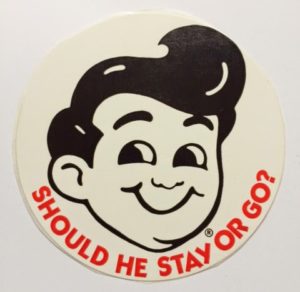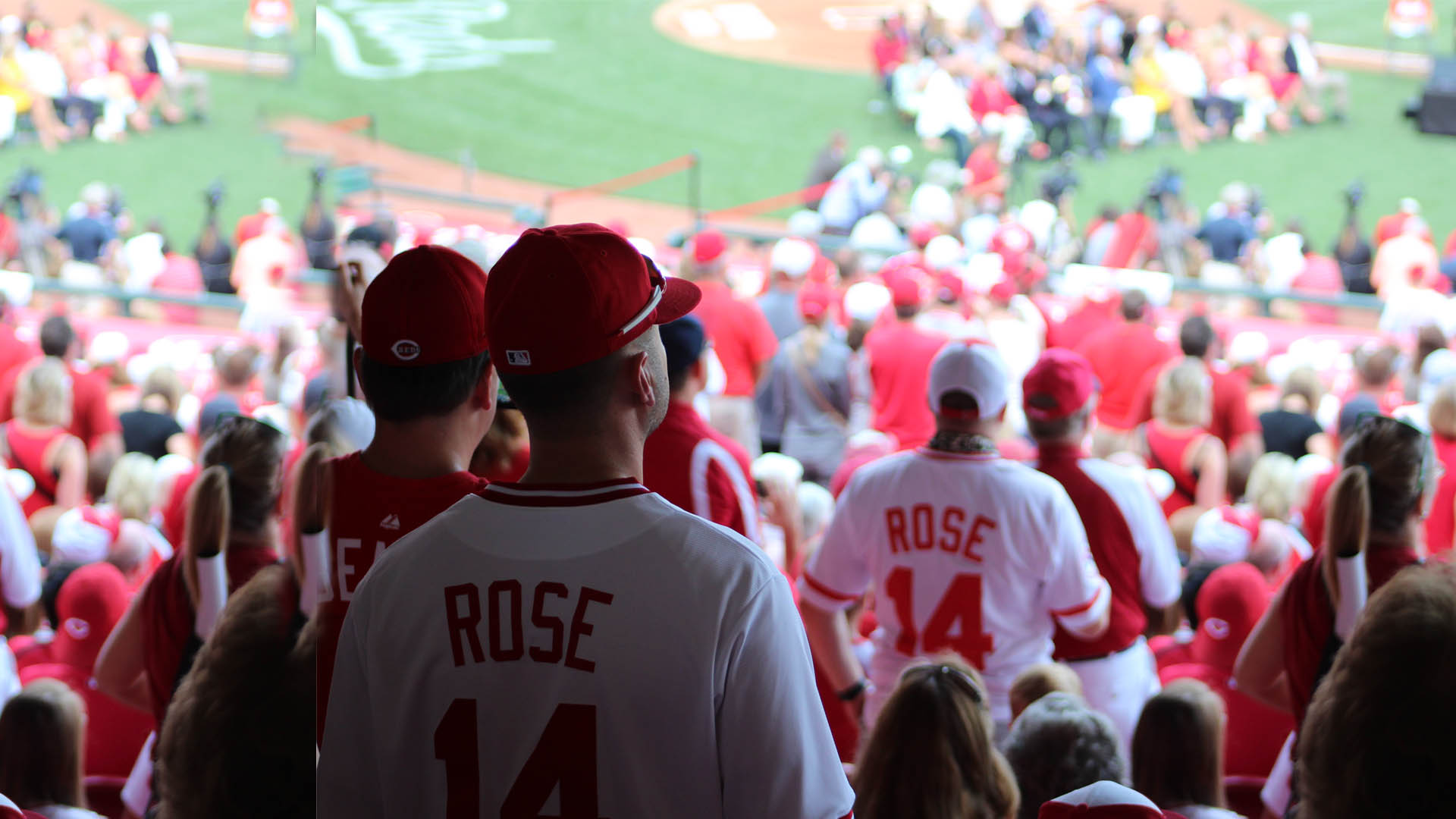To Trade or Not to Trade?
Does Jay Bruce Have to Go?
It began in late 1984. The cold and calculating front office of what was in all ways a corporate empire, launched—in an attempt remake itself—a campaign to get rid of one of its own. He had been loyal. He had been productive. He was the epitome of affable, standing there, tall and well-coifed, wearing his familiar red and white uniform. He was, in many ways, the face of the franchise. They asked fans on the street before discarding an old friend. The answer to their question, “Should the Big Boy stay or should the Big Boy go?” came echoing back in resounding fashion:
Thirty-some years later, it’s time to take stock and ask the question again:

Should Jay Bruce stay or should Jay Bruce go?
As Jay Bruce’s stock reaches what some think are 2003 Krispy Kreme proportions, the answer and the corresponding course would seem a fait accompli. The rebuild almost demands the Reds get as young as possible in order to keep the next window open as long as possible. Except the Reds aren’t necessarily getting as young as possible. They’re attempting to thread the needle between obtaining cost-controllable players—and players who are close to being major league ready, so that the window reopens sooner rather than later. That means drafting a college player (Nick Senzel) who can be fast-tracked to GABP, and acquiring players like Jose Peraza instead of pursuing high school studs like Jason Groome or Mickey Moniak.
For all the talk about Jay Bruce’s inconsistency—May Jay followed by a swooning June Jay—each season between 2010 and 2013, Jay’s Weighted Runs Created Plus numbers would hover around a very solid 120. His fWAR would never be below 2.5, averaging 3.7 over those four years—and would have been much higher but for those mysterious defensive metrics—which dragged the numbers through the infield dirt.
Then, Mr. Meniscus paid a visit to Bruce in the spring of 2014; and although the Reds right fielder ignored the knocking on the door, injury found a way in and Bruce was forced to admit he was swinging on one leg, much like friend Joey Votto. A return from surgery was swift, arthroscopic miracles being what they are these days; and suddenly Bruce was back, even if the numbers and the inefficient swing said otherwise. Like a shopping cart that heads down the aisle with wheels relentlessly pulling to one side, Jay seemed to be yanking everything, balls more often than not finding the webbing of shifted infielders.
Bruce swore he was healthy. If he was right, his mechanics had changed, either from mistrust of the knee’s stability, or from bad habits born of a forced layoff from the everyday—short-circuiting any timing he might have had.
By 2015, Bruce was surely healthy, but the numbers remained anemic. The Reds had tried to move Bruce to the Mets at the non-waiver deadline, and again in the off season to the Blue Jays, but the questionable health of the players offered in return scuttled both trades. By the spring of 2016, Bruce seemed worth little more than a Kroger newspaper circular.
. . .
Three months into the 2016 season, Bruce’s bat has been reborn. I was convinced he wouldn’t make it out of spring training with the Reds, but here he is, the subject of a never ending whispering campaign to see him moved before the summer crests.
There’s plenty of angst about waiting too long, of risking a slump that could diminish his trade value. I find those fears misplaced. Everyone in baseball knows who Jay Bruce is—a power hitter with a middling lifetime batting average. He walks at an acceptable, if unexciting rate. He’s currently hitting an unlikely .394 with RISP, but we know that won’t last and shouldn’t; and teams that look at the numbers will know that, too. Maybe he’s suddenly figured it out and the long slumps that have defined a career and kept him from being an elite player are a thing of the past. Maybe.
Either way, he’s always been a fine baseball player, better than he’s been given credit for, even if his diminished defensive numbers are real and not a product of some hard-to-fathom and misleading metrics.
I’m pretty sure there’s a silent minority of fans who think the Reds are crazy to trade Bruce now that he’s found an ability to hit the ball with authority to left field with some regularity. They have an argument.
Rebuilding requires a few dependable bats. If and when the Reds do trade the Texan, they will have few sure things waiting in the wings to fill the next outfield. Jesse Winker is one. That’s it. Adam Duvall may be the next big thing patrolling the warning track. But an exciting three months are just that—three small sample size months. For as long as Bruce has been around, he’s still on the right side of 30. He may very well have 3 or 4 more years of real production in his bat before time steals his sunshine and the inevitable sunset occurs. Keeping Bruce would make a sketchy hitting Hamilton much more palatable—acceptable even.
As people are beginning to recognize, when it comes to contracts, it’s not the MONEY, it’s the YEARS that matter. If the Reds could sell Bruce on a three-year deal and overpay him a little to make up for the loss of years, both sides could benefit. Yet, it’s hard to believe Jay Bruce or his agent would go for that. He’s got one more chance to make big money and I’m guessing he believes in himself and holds out for more money and more years.
And ultimately, that’s why Jay has to go. He doesn’t have to go today or even tomorrow. If, as noted above, everyone in baseball already knows who Bruce is as a player, a slump changes perception for fans only. It shouldn’t change much for a GM with a need. He’s proven he can hit again. That question mark has largely been removed from the resume. Strange as it may sound, an August 1st trade might, in fact, be optimal. The desperation and temptation that comes with being just a little short of bona fide World Series contention with two months to go might just be what the doctor ordered for a sizable return. It wasn’t just two months of Johnny Cueto that returned so much pitching gelt to the Reds. It was the reality that a pitcher of Johnny’s caliber could be the final piece of the championship puzzle for the Royals and GM Dayton Moore, who doubled down, knowing his legacy might be at stake.
The grace and aplomb Jay Bruce has displayed through the trade speculation that has followed him like a shadow for almost a year makes it that much harder to part ways with him. He’s the kind of guy you want in your foxhole if you’re a player, a manager or a fan. But, go he must.
And so we watch and wait to say goodbye.







No Comments